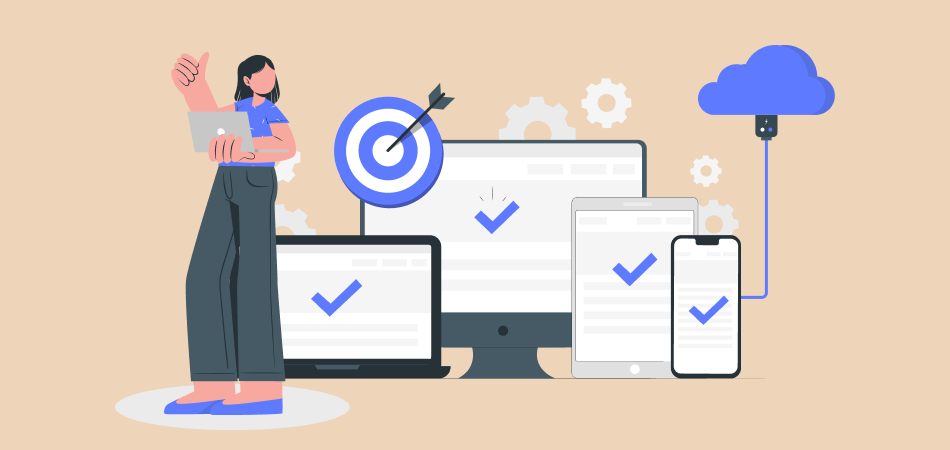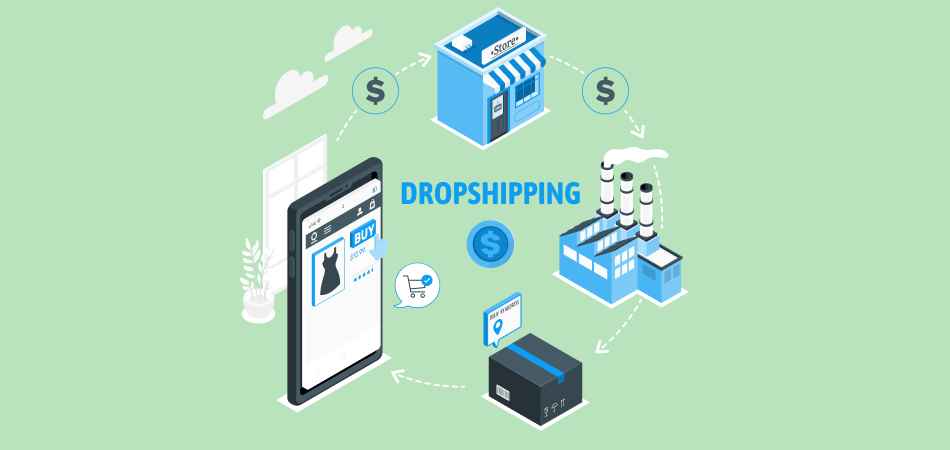What Are Distribution Channels? Definition, Types & Examples

Are you yet to decide on a distribution channel? Well, this is one of the most important elements that every business should think upon. Distribution channels are required to determine the correct path goods will take to be transferred from the manufacturer to the final consumer.
Hence, they have a straight impact on sales and increase overall revenue. Fortunately, companies now have the opportunity to select the most suitable types, formats, and levels of distribution channels that perfectly define their businesses. However, before stepping ahead, it is crucial to understand the insights of each of them so it is easier for you to opt for the perfect one depending on the nature of your business objective.
However, it takes expertise to evaluate all forms of distribution channels; therefore, we have brought this guide for you to remove the confusion you may experience during this task.
What Are Distribution Channels - Precise Definition
The simplest definition of Distribution Channels is how businesses can make their goods and services reach the final buyer or the end consumer. Moreover, this is the process that initially starts from the manufacturing stage, aiming to end up by selling them to consumers or at least making goods available to final customers in sales outlets in minimal time.
In short, it is a technical name that includes wholesalers, retailers, distributors, and even the internet. Distribution channels contain the power to directly impact a company's sales, which strengthens the decision to make it as efficient as possible and is essential to consider.
Types of Distribution Channels In Marketing
There are mainly three types of distribution channels you can discover. Here in this section of the post, we will explore them all one by one, along with practical examples:
- Direct Channel
- Indirect Channel
- Hybrid Distributive Channel
1. Direct Channel: Manufacturer → Consumer
A direct route exists when a company or supplier delivers items directly to customers. In this level of distribution channels, the manufacturer handles all marketing tasks himself. There is no intermediary. The manufacturer strives to reach consumers through direct methods of distribution. For examples:
- Own retail outlets,
- Home-to-house selling
- Mail sales
- Factory door sales
The corporation is solely responsible for distributing items to customers via direct channels. Goods are not routed through any middlemen before arriving at their expected destination. Manufacturers contain complete control over the distribution route under this arrangement.
| Get Started Now to Grow Your Online Business with the Best AliExpress Dropshipping Tool - DSers! |
The manufacturer-to-consumer link looks to be a straightforward and low-cost technique of distribution channels, but it is impractical for marketing a huge volume of consumer goods. Consider the challenges that a manufacturer of soap, hairpins, toothpaste, shoe polish, cigarettes, drinks, and so on will confront when selling directly to customers.
For Example: A direct distribution route might be used by a firm that creates garments and sells them directly to clients via an e-commerce platform.
2. Indirect Channel: Manufacturer → Wholesaler → Retailer → Consumer
Indirect distribution routes are sometimes known as exclusive distribution channels. The Indirect Channel of Distribution is described as the marketing of goods to retailers who then sell them to customers. It is the most efficient way of product distribution and is widely used to promote clothing, machinery, autos, furniture, and other items. The advantages of indirect distribution channels include more control over the supply of commodities. More examples are:
- Speedy product disposal
- Reduced selling costs
- Improved salesperson training and
- Rapid response
The advantage is that this allows you to sell in bigger quantities and to a wider range of clients. However, product prices are greater due to fees paid to intermediaries.
For Example: Our means by Intermediaries are wholesalers, retailers, distributors, or brokers, not the sellers.
3. Hybrid: Manufacturer → Authorised retailer → Consumer
A hybrid distribution channel is a combination of direct and indirect distribution routes.
Manufacturers collaborate with intermediaries such as authorised merchants to offer customer items in hybrid channels. As a result, manufacturers gain greater assistance with product distribution, which speeds up the process and increases income. At the same time, customers have a simpler way of acquiring things, increasing customer happiness.
In addition, the manufacturer retains control over consumer contact and communication in order to monitor messages and brand reputation. However, because the middleman must profit, client product prices must be raised.
For Example: Brands that market their items online but do not deliver them directly to clients are one example.
Functions of Distribution Channel
To comprehend the significance of distribution channels, organisations must recognize that they do more than simply bridge the gap between a product's manufacturer and its user. Distribution routes give usefulness in terms of time, place, and ownership. They ensure that the product is available when, where, and in the amounts desired by the consumer. However, in addition to these transactional functions, distribution channels are also responsible for the following:
1. Logistics and Physical Distribution
Distribution channels are answerable for the assembly, storage, sorting, and transportation of goods from manufacturers to customers.
2. Facilitation
Channels of distribution offer pre-sale and post-purchase services, for instance, financing, maintenance, information dissemination, and channel coordination.
3. Creating Efficiencies
There are two ways to make this happen: bulk breaking and creating assortments. Wholesalers and retailers purchase large quantities of goods from manufacturers but break the bulk by selling a few at a time to many other channels or customers.
They also offer different types of products in a single place which is a huge benefit to customers as they don't have to visit different retailers for other products.
4. Sharing Risks
Because most channels purchase the items in advance, they share the risk with the makers and do everything necessary to sell them.
5. Marketing
Distribution channels are also known as marketing channels since they are among the primary touchpoints via which many marketing tactics are carried out. They have direct contact with customers and assist manufacturers in communicating the brand message, product benefits, and other benefits to customers.
Examples of 9 Popular Intermediaries in Distribution Channels
After learning more about the operation's specifics, it's necessary to determine who the primary intermediates transport things to customers.
1. Shopkeepers
Retailers are often employed as middlemen by businesses. Supermarkets, pharmacies, restaurants, and bars are among the examples. Each of these sorts of enterprises has complete sales authority. As a result, product costs are often greater in stores.
2. Wholesalers
Wholesalers are middlemen that purchase and resell items to retailers. Wholesalers sell to those who plan to sell their items in their storefronts. Although there are exceptions, such as supermarkets that sell under the wholesale model, these intermediaries typically do not sell tiny quantities to ultimate customers. Prices are reduced since big volumes are sold.
3. Distributors
Retailers and wholesalers rely on distributors to sell, store and provide technical assistance. As a result, their operations are concentrated in some geographic regions.
4. Agents
Agents are legal entities that are paid a commission to market a company's goods to ultimate consumers. The partnerships between intermediaries and corporations in this scenario are long-term.
5. Brokers
Brokers are also employed to sell and earn a commission. The distinction between agents and brokers is that brokers have brief ties with the firm. This is true, for example, of real estate agents and insurance brokers.
6. Internet
For those who offer technology and software, the internet is an intermediate distribution route. To achieve access to the material, the user merely needs to download it.
E-commerce businesses use the internet as a distribution middleman as well.
7. Sales Groups
A corporation may also have its own sales force in charge of selling goods or services. If the firm has a diverse product line, it may be necessary to form more than one team to market to different sectors and consumers.
8. Resellers
Resellers are businesses or individuals purchasing from manufacturers or merchants to resell to customers.
9. Catalogue
Catalogue sales, as the name implies, occur when a salesman is affiliated with a firm and offers their items through a magazine. In this strategy, salespeople often get a commission on their sales.
The Takeaway
Are you prepared to define and manage your company's distribution channels? From benchmarking through sales outlet analysis, follow the methods outlined in this article. Consider each channel's cost-benefit ratio.
And regardless of your decision, keep an eye on indications and metrics. This study allows you to examine the performance of the distribution route and continually optimise it. Eager to know more? Reach out to DSers to learn the experts' ideas and to grab the opportunity of knowing what industry professionals suggest earning the most revenue.













 Company
Company
 Why Choose DSers
Why Choose DSers
 Blog
Blog
 Help Center
Help Center



